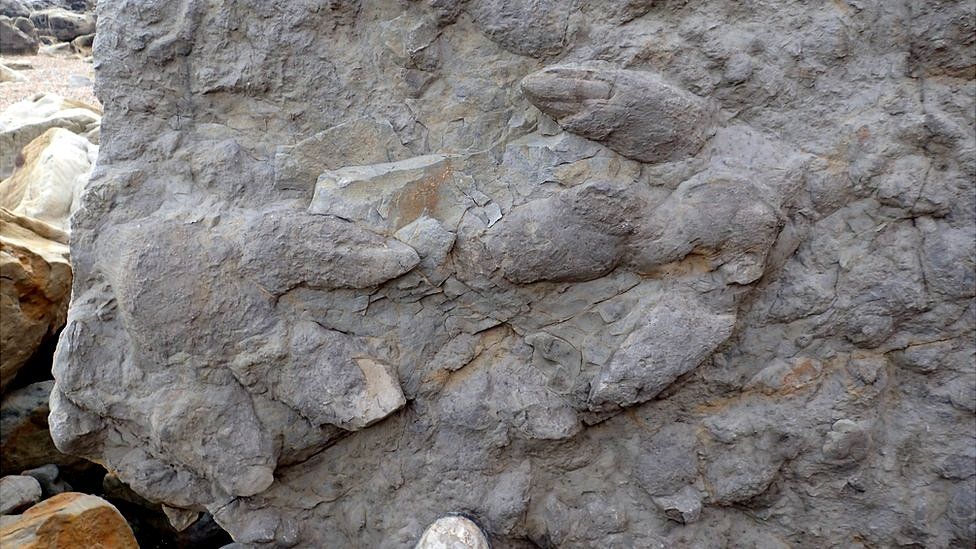An international team of paleontologists has discovered a 5.7-cm-long stegosaur footprint in Xinjiang province, China.

A life reconstruction of the stegosaur trackmakers and paleoenvironment 110 million years ago. Image credit: Kaitoge.
The newly-discovered stegosaur footprint was left around 110 million years ago (Early Cretaceous epoch).
It belongs to the ichnogenus Deltapodus and co-occurs with the tracks of larger individuals.
Found in the Tugulu Group, China’s Xinjiang province, it is only 15% as long as the type of Deltapodus curriei from the same locality.

“This footprint was made by an herbivorous, armored dinosaur known broadly as a stegosaur — the family of dinosaurs that includes the famed Stegosaurus,” said Dr. Anthony Romilio, a paleontologist in the School of Biological Sciences at the University of Queensland.
“Like Stegosaurus, this little dinosaur probably had spikes on its tail and bony plates along its back as an adult.”
“With a footprint of less than 6 cm, this is the smallest stegosaur footprint known in the world.”
“It’s in strong contrast with other stegosaur prints found at the Chinese track site which measured up to 30 cm, and prints found in places like Broome in Western Australia where they can be up to 80 cm.”

The world’s smallest stegosaur footprint, Xingjiang province, China. Image credit: Lida Xing.
The tiny stegosaur footprint has similar characteristics of other stegosaur footprints with three short, wide, round toe impressions.
However, Dr. Romilio and colleagues found the print wasn’t elongated like larger counterpart prints discovered at the track sites, which suggests the young stegosaur had a different behavior.
“Stegosaurs typically walked with their heels on the ground, much like humans do, but on all fours which creates long footprints,” Dr. Romilio said.

“The tiny track shows that this dinosaur had been moving with its heel lifted off the ground, much like a bird or cat does today.”
“We’ve only previously seen shortened tracks like this when dinosaurs walked on two legs.”
“It was plausible young stegosaurs were toe-walkers,” said Dr. Lida Xing, a paleontologist in the State Key Laboratory of Biogeology and Environmental Geology and the School of the Earth Sciences and Resources at the China University of Geosciences.
“This could be possible as this is the ancestral condition and a posture of most dinosaurs, but the stegosaur could also have transitioned to heel-walking as it got older.”
“A complete set of tracks of these tiny footprints would provide us with the answer to this question, but unfortunately we only have a single footprint.”
Source: sci.news







